In the 12th year, Weichai Power has grown from a state-owned company that was insolvent and in bankruptcy to becoming the largest domestic and world-renowned professional engine manufacturing company. Its success footprint has been invited to the Harvard MBA case.
In 12 years, Weichai Power completed a leap from 50 to 60 billion yuan, a growth of more than 100 times; the world's industry leader, Cummins, adjusted its global strategy due to the rise of Weichai;
In 12 years, Weichai Power's integration of development elements such as reform, innovation, strategy, and culture has achieved the transition from "Made in China" to "Created in China" to "Made in China" in the equipment manufacturing industry.
In 12 years, Weichai Power showed us a "successful sample" of the reform and development of Chinese state-owned enterprises. The Weichai model created by Weichai in practice embodies the integration of the advantages of state-owned enterprises and market characteristics, and it also practices the sustenance of state-owned enterprises from top to bottom, from leadership to employees. The unconventional speed of development of Weichai and the reasons behind the speed have provided answers to several questions from "how large and how state-owned enterprises can become stronger."
In 12 years, Weichai Power carried and accomplished the world dream of an industry in China. Weichai takes the responsibility of revitalizing the national industry and leading the rise of China's equipment manufacturing industry. It is moving from “learning†to “benchmarkingâ€; Weichai’s international vision of advancing with the times, synchronizing its development with the world’s industry growth, Integration; Weichai has demonstrated the dignity, status, and value of Chinese companies in the international competition. Weichai's industrial dream is leading the growth of an industry in China and is also contributing to the development of a national industry.
The 12 years of Weichai is 12 years of continuous value creation. The value of Weichai is not only reflected as the economic value of a company, but also as a social value of a company. The value of Weichai has implications for the development of Chinese companies and for the growth of Chinese industries.
Weichai Power, China's Value. Let us approach Weichai and interpret the 12-year leap-forward development process from the perspective of value.
Value creation stems from the "driving revolution"
Inscription: The process of creating value by enterprises requires continuous support. Weichai started its value creation from “creating customers†and “creating marketsâ€, and institutionalized the motives of creation with in-depth reforms. In Weichai, value creation reflects the organic integration of state-owned enterprises' traditional political advantages and modern market mechanisms.
Institutional advantages can be the greatest competitiveness; the value of chopping wood reflects the brightness of institutional values.
One day in May 2010, we came to Weichai. In a workshop with a world-class production line, equipment is continuously running day and night. Once an engine goes down the production line, it is immediately loaded into containers and shipped to all parts of the world. In the factory area, trucks waiting for engines are queued up in long queues.
This scene of demand for products that was in short supply was unimaginable. Weichai 12 years ago was unthinkable. At that time, we entered the plant area of ​​Weichai. The diesel engines on both sides of the road were full of diesel engines that could not be sold. Workers were unable to obtain wages for 6 months. The workshops could not be opened, and bun shops, canteens, and barbershops were opened next to the workshop. . In the 1990s, state-owned enterprises like Weichai were very common.
Being away from the market and producing products that cannot create value for customers, this is the deep reason why many state-owned enterprises are in difficulties.
Weichai at that time was also a product of a typical planned economy. The Steyr engine produced by Weichai is invested by the state with several hundred million yuan from abroad. The annual design production capacity is 10,000, and the technology is relatively advanced. However, the scope of application is very narrow: only one heavy-duty automobile plant is equipped with fixed points. At the time, this car factory only had a production of more than a thousand vehicles a year - Weichai "we couldn't eat enough."
How to get rid of the predicament? In June 1998, when Xuichai was the most difficult time, the 37-year-old Tan Xuguang was appointed director. The first thing he chose after taking office was to inject the genes of the market into Weichai, create customers, and open up markets.
The Steyr engine was originally introduced as a simple car engine. At that time, the power used by China's construction machinery was mostly small horsepower and relatively backward technology. However, moving the vehicle power directly to the construction machinery is not feasible. Although Steyr has achieved hundreds of technical transformations and performance enhancements for the Weichai people, the power of the vehicle and the construction machinery do not have the same requirements for torque reserve, reliability, work environment, and driver level.
Where is the customer? Where is the market? Tan Xuguang led all factory-level leaders, marketing and technical personnel and began to visit engineering machinery users to directly understand the market demand. The technicians who had never left the house were "moved out of the chair" and walked out of the office to redesign and remodel the engine from the perspective of meeting consumer demand. Soon, engineers and technicians improved the design of the engine, parts and components as well as the overall performance improvement, and developed nearly 100 kinds of engines that meet the specific needs of the construction machinery and can increase the value for construction machinery users.
Because we adapted to the needs of customers and markets, Weichai "lived". "Live" Weichai has therefore created a marketing model with Chinese characteristics - "encircling the cities in rural areas." Zhang Quan, the current CEO of Weichai Power and then the quality minister, still remembered the difficulties of opening up the market. In the beginning, the large construction machinery factory still did not see this new product. Weichai first used it from small township small factories. Shandong Engineering Machinery Factory is a township enterprise. After selecting Weichai's Steyr engine, the product quality has been fundamentally improved, the market is in short supply, the price is high, and it has quickly become one of the top four in the country.
The products that can create new value for customers are finally recognized by customers. Other small and medium-sized construction machinery plants also followed in the footsteps of Shanshan. Large manufacturers also assembled Weichai's engines on a scale.
Today, Weichai not only holds an absolute 80% share in the 5-ton loader sector, but also transforms itself into a full-range, full-range strategic supplier. Excavators, bulldozers, road rollers, and cranes have all become users of Weichai engines, and the tonnage is also moving into the fields of 3 tons, 4 tons, and 6 tons. Today, in competition with foreign construction machinery giants, Chinese companies have occupied most of the market share, which is inseparable from the strong driving force provided by Weichai.
Market power has been found, where is the next power? Tan Xuguang turned his attention to institutional reforms. The system is not only one of the external manifestations of corporate value, but also the guarantee that the company can continue to create value.
Since 1998, China has put forward the goal of “three-year reform of state-owned enterprises to get out of difficulties†and established the reform ideas of “increment reduction, efficiency increase, diversion, regulation, bankruptcy, and merger promotionâ€. Against this background, in 2002, the “Three-Three†system reform that determined the destiny of the company’s fate opened the prelude to the transformation of Weichai’s property rights and the move towards an international modern enterprise.
The so-called "three-three system" reform is to divide the existing assets of Weichai into three parts: the non-core business that assists in the matching of parts of Weichai's one-third of its business volume; and the privatization reform; A traditional business such as the medium speed machine will remain in the enterprise, establish a limited liability company, and open up new space for the product market; the high-speed machine segment of the core business will undergo joint-stock reform and be listed on the market.
Reform shakes chopping wood. Twenty-one 34 management departments of the entire factory have cut off 21 jobs, and more than 3,000 jobs have been cancelled or merged; more than 700 administrative cadres in the entire plant have been reduced to more than 200 people now, of which less than 1/4 are 700. Many people continue to use.
Reform, activate Weichai. The construction of a modern enterprise system that allows cadres to work on the energy, employees can enter and work, property rights are clear, and management practices are basically completed.
The reforms use facts to prove that state-owned enterprises can do all they can to maintain the strong technical strength and high degree of cohesiveness and sense of belonging of state-owned enterprises, and also to realize the advantages of flexibility in private-owned enterprises, employing talented people, and assigning reasonable advantages.
From the creation of customers, the development of markets, to the reform of systems and mechanisms, Weichai has completed the "driving revolution" of getting out of its predicament and seeking development. The effect of power has continued to show afterwards.
On April 8, 2005, General Secretary Hu Jintao visited Weichai, and fully affirmed the "firewood model" of the "state-owned enterprise superiority + marketization gene." He said that Weichai is a large-scale state-owned enterprise and has achieved rapid development in recent years. This shows that you have fully utilized the traditional advantages of state-owned enterprises, especially political advantages. At the same time, in accordance with the requirements of market economy, you have injected new mechanisms. Practice has proved that the full utilization of the two advantageous resources of state-owned enterprises will surely exert great potential.
This “weak model†provides a valuable reference template for the reform and development of other state-owned enterprises.
Value expansion, capital promotes "industry collaboration"
Inscription: The realization of corporate value requires both connotative growth and extensional expansion. Connotation growth depends on R&D, production, and management; on the other hand, extensional expansion requires the use of capital.
In the 12 years of Weichai, the connotation of growth and the expansion of extension have achieved perfect unity on the platform of scientific development. The expansion of Weichai's capital strength is highly rational, fully embodies the characteristics of the “capital era†and reflects the pursuit of industrial synergy. Therefore, the expansion is not only the scale of Weichai, but also the value of firewood.
March 11, 2004, Hong Kong. Tan Xuguang suppressed the excitement of his heart and slammed the Hong Kong Stock Exchange's copper gongs. This meant that after several years of reform and development, Weichai became the largest manufacturer of high-power high-speed diesel engines in China, and embarked on an international capital. The new journey of the market.
In the fierce market competition, the state-owned assets must achieve a suitable development path in order to realize the expansion and promotion of value. The capital market is one of the most efficient ways.
With RMB 1.4 billion in the stock market, what will Weichai do next? Is it a new production line with RMB 1 billion, or is it used to control 10 production lines of other companies? This is a path of value growth. Tan Xuguang said that state-owned enterprises should learn to use capital to amplify the market and achieve a geometric growth of state-owned assets.
In 2004, a major event that affected the commercial vehicle industry took place in China's capital market: The Delong Group, which used to be a leader in the capital market, broke out in the credit crisis, leading to the collapse of the Delong series. Tan Xuguang, who has long been personally admired for Deron’s assets, especially the torch, knows that opportunity has come. Weichai established a special working group to carry out relevant research and preparations for the acquisition of the Hunan Torch.
When many people in the capital market are discussing how much the torch is worth, the Tan Xuguang sees not the financial value of the Torch but the strategic value. In his view, "the torch is the golden key to restructuring the heavy truck industry."
In the end, Weichai purchased successfully and became the largest shareholder of the Hunan Torch. This successful acquisition not only enabled Weichai to move from Weifang to the whole country, but also made Tan Xuguang's “industry synergy†that he has been struggling to pursue. The dream has come true!
Some people compare the industry chain to a “smile curveâ€: high-value R&D and marketing are on both ends, and low-value production and processing are in the middle. However, in an objective environment where China's own market is large and its R&D strength is generally not strong, it is not realistic for companies to focus on the two ends of the industry chain.
Weichai chose a development model with an industrial chain with Chinese characteristics: to grasp the entire industrial chain from the development of key components and components to the manufacture of complete vehicles, and to create an “optimal value chain†for the commercial vehicle industry.
The choice of this model is based on the profound industrial concept of Weichai: Weichai Power is an industrial company and must implement the "two-wheel drive" of industrial management and capital management. However, the ultimate goal of capital integration is to enhance the company's industrial competitiveness and enhance the competitive position of China's equipment manufacturing industry in the world market. This is also the responsibility and mission of industrial capital.
Those familiar with the commercial vehicle industry know that Xin Weichai has high-quality core assets including Weichai Engine, Shaanxi Heavy Duty Truck, Fast Gearbox, Zhuzhou Spark Plug, Shaanxi Hande Axle, etc. The leaders of the industry are interconnected and complementary to each other, and they have become the most complete and strongest heavy-duty automobile industry chain in the country.
Industrial chain lengthened. Where is the core competitiveness of Weichai New Group and where is the future product competitiveness of the new group?
In the late spring and early summer of 2007, Tan Xuguang made three trips abroad to visit famous companies in Germany and the United States to find the answer to the new expansion of Weichai.
July 24, 2007, Beijing Xiyuan Hotel. At the first half of the group's economic operation analysis conference held in Weichai, Tan Xuguang's “revealed secrets†answer: to give full play to the synergies and the advantages of the overall industry chain, enable resources to complement each other's advantages, and establish a new international group.
Thus, the concept of "chain competition" has become a practice in the new Weichai. At the end of 2007, as the result of industrial synergy and “chain innovation,†the country’s first new product “powertrain†for system matching and integration of engines, transmissions and axles was born in Weichai. The fragmented Chinese automotive industry chain finally has its own system integration product. The "optimal value chain" that Weichai has been trying to build has begun to truly reflect its value.
This value has greatly improved the overall capabilities and quality of an industry. Previously, in China's commercial vehicle market, manufacturers of engines, transmissions, and axles were all relatively independent. After the OEM purchased related products, it was necessary to re-align the system and continuously adjust various parameters, which was time-consuming and laborious. Now, as long as the vehicle manufacturer designs and installs cabs and cars on the basis of this “powertrainâ€, a new car can be brought to market, and the R&D cycle is shortened by 1/3. Since then, in the field of commercial vehicles, Chinese companies have had an undisputed competitive advantage from engines, gearboxes to car brands.
This value makes Weichai as a company's industrial dream, solid ground. China is a latecomer to the automotive industry, initially relying on the introduction of foreign technologies and products. Weichai adheres to the road of “mainly based on me and innovation through linkageâ€, has independent intellectual property rights and brands, and creates products and services that maximize value for customers.
A set of data may allow us to better understand the value of Weichai’s expansion through “synergiesâ€: the heavy-duty vehicles with a capacity of more than 15 tons running on China's highways will have 60 units per 100 vehicles. When the engine is up, the last figure is 80.
Weichai has been able to hold up half of China’s heavy-duty auto industry with its own efforts.
Value Innovation, From "Made in China" to "Made in China"
Inscription: The road to Weichai, filled with "creative" innovation "and creation", the core is to always pay attention to value, and constantly innovate value.
Weichai's innovation is reflected in all aspects of technology, products, marketing, and management, highlighting Weichai's personality.
Relying on innovation, Weichai has practiced the road of national industry innovation from “Created in China†to “Intellectual Creation in Chinaâ€. "Created by China" and "China Standard" have become "Chinese intellectual creation" with the characteristics of Weichai.
China is known as the “world factory†and “Made in China†products are found all over the world. However, products with low added value and lack of value innovation also make Chinese companies’ sustainable development capabilities seriously insufficient. Weichai, who was once a member of “Made in China,†has continued to invest in R&D through innovation in development thinking, and has successfully transformed from “made in China†to “made in Chinaâ€.
This day is destined to be remembered by every single person; this day is also destined to be written into the history of the development of internal combustion engines in China.
On April 13, 2005, China’s first 10-litre, 12-litre high-power engine with completely independent intellectual property rights and meeting Euro III emission standards was successfully fired. After two years of hard work, she finally dreamed. The Weichai people who are good at “turning impossible things into reality†have excitedly opened up champagne and celebrated the beginning of the “China Power Era†in which China’s internal combustion engine manufacturing has entered independent innovation.
Weichai people named this machine "blue engine." With the advent of Blue-Ring, there is no competitive advantage in high-priced foreign similar products in the Chinese market.
The price is no longer the decisive factor of product competition, what is the decisive factor? The value of the product. The successful R&D of Lanqing marks that Weichai has established a relatively complete independent research and development system, and also marks Weichai's appeal to its own products, shifting from the previous price to value.
This shift began with the shift in the concept of “price thinking†to “value thinking.†The high-power engine is the pearl of the crown of commercial vehicles. It has far-reaching influence on the development of the industry, high technological content, and is difficult to research and develop. Prices have also remained high for a long time. Over the years, foreign companies have been holding high-end markets. Chinese companies once concentrated on low-end and mid-to-end markets and competed for limited market share by "price wars." Weichai is determined not to spend more energy on low-priced products, and to make a fuss about high added value. Value innovation has become the biggest focus of Weichai.
In 2003, with good product quality and low prices, the sales situation of Weichai's Steyr engine market was very good at that time, but Tan Xuguang decided to develop a high-power engine with independent intellectual property rights and advanced world standards. With Weichai’s scientific research ability that year, this is another “nearly impossible†task. Moreover, the development of new aircraft will require hundreds of millions of funds. If it fails, many people will shake their heads.
Tan Xuguang made a decision that was far beyond anyone's expectation: to set up a research and development base in Europe for the Global Engine Technology Center, borrowing brains and joint research and development. A team of 20 scientific researchers led by Weichai Technical Center Director Luan Dehui came to Europe and established an R&D center with AVL Austria. Since then, more than 100 Weichai researchers have been sent to Europe one after another. This is both work and study.
Joint research and development, let Weichai eat sweet fruit. Sun Shaojun, executive director of Weichai Power's scientific research, came to Weichai after graduating from Beijing University of Aeronautics and Astronautics in 1988. He was the first master student of Weichai. During more than 20 years, he witnessed and experienced a low level of scientific research from Weichai. To the high development process. He said that before 2000, it was a stage of introduction, imitation, and learning; from 2000 to 2005, it was a stage of cooperation with foreign R&D institutions; after “blue engine,†it was a period of completely independent innovation. Through the research and development of this product by Lan Qing, Weichai people got the “four onesâ€: they built a research and development platform, brought out a scientific research team that could fight, and established a set of advanced R&D processes to form a set of Strict R & D specifications.
This "four ones" has laid the foundation for Weichai to realize "China's intellectual creation."
On December 20, 2008, at the business conference held by Weichai Group, two new models representing the world's advanced level - the 5-liter and 7-liter engines appeared. These two new models that have been successfully developed in three years, fully meet Euro IV and Euro V emission standards, are ideal for passenger cars, trucks, and construction machinery. They have introduced the most advanced international research and development concepts and have applied a number of world advanced patents. technology. Moreover, the application of a number of energy-saving technologies has made it more suitable for the needs of the modern society. The multi-power fuel-saving switch is a diesel engine intelligent technology developed based on the electronic control function. The driver selects three different power output modes of heavy load, medium load, and no-load according to different road conditions and different loading capacity. By gently pushing the fuel-saving switch, you can select the best diesel power. In addition, fuel-saving thermostatic fans and fuel-efficient cylinder-breaking technologies developed on an advanced platform relying on electronically-controlled high-pressure common-rail systems have been combined to reduce the overall engine oil consumption by 15%, and a truck can save nearly 5,000 liters of diesel fuel a year.
Energy conservation and environmental protection have enabled Weichai's new products to have the value of “green power†and also signified Weichai’s value-driven innovation with technology as its core. It has entered the stage of independent research and development from the joint research and development stage. Weichai's value innovation capability has therefore been enhanced again.
This is not the end. Weichai’s value innovation continues.
In November 2009, the world economy under the international financial crisis was still at a low point. Weichai’s executive president, Jiang Kui, led the team to the United States to recruit high-end talents. Among the 47 talents who joined, there are no shortages of industry experts with world top 500 working experience. Many people sold their houses and cars in the United States, came to China, and joined the team of Weichai. Leading them, WeiChai's Electronic Control Technology Research Institute and the New Energy Powertrain Research Team have been set up to begin operations. Weichai is incorporating original innovations and basic research such as electronic control technology, post-processing, and application software into its R&D planning system, striving to remain at the highest end of the value chain.
Today, on every engine left by Weichai, a chip with the size of a telephone card only is set up: Common Rail. This collection of GPS+GPRS electronic modules is the only high-tech product in the country. It can not only be globally located, but also can carry out various information collections and can also implement remote control of vehicles.
Technology advances and innovation is endless. At present, Weichai has set up R&D centers in Weifang, Jinan, Hangzhou, Xi’an and Shanghai, and has two overseas R&D centers in Europe and the United States. Every week, Sun Shaojun must hold an online video conference with various R&D centers around the world to exchange information and develop collaboratively. Sun Shaojun said that after three to five years, Weichai will become one of the most powerful R&D centers in the industry in the world.
"China is made of wisdom" and its value has no borders. Accompanying Weichai's continuous efforts to bring "China's wisdom-making" to a new height, Weichai's corporate value concept and industry influence will also be as global as its R&D center.
TORICH is focusing on Honed Tube manufacturing and exporting,
ID Honed Tube is produced by cold drawing on stainless steel or carbon steel over a mandrel,
seamless honed tube where the surface is honed or skiving roller burnish, and the tubes are stress relieved and annealed if it is necessary.
The Steel Tubes are produced according to technical standard of
EN10305-1 Cold Drawn Seamless Steeel Tubes
EN10305-2 Cold Drawn Welded Precision Steel Tubes
Seamless and Welded DOM tubing are produced by material of E155,E195,E235,E275,E355 +C +LC +SR +A +N
DOM is a process that is applied to tubing after it is initially constructed.
It is referred to as Seamless ,It can be said that do seamless process method on ERW tubes,
So the tubes will have a high strength ,high quality.
DOM tubing is commonly use in auto parts and machinery parts, also for heavy engineering industry.
Big Diameter Honed Tube, Skiving Roller Burnished Tube, max ID 650mm, max length 12000mm
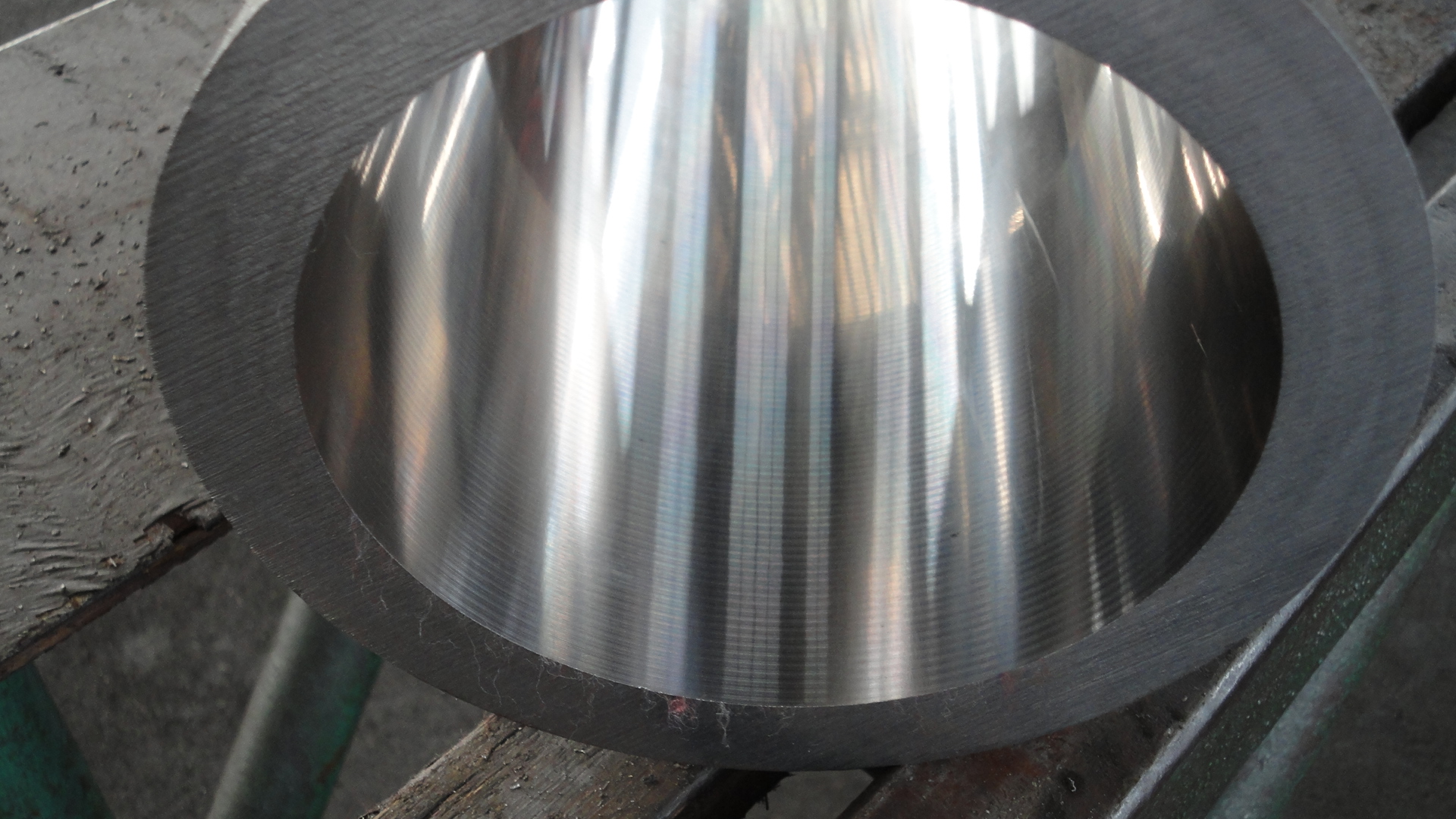

Production facility for ID Honed and Skiving Roller Burnished Steel Tube
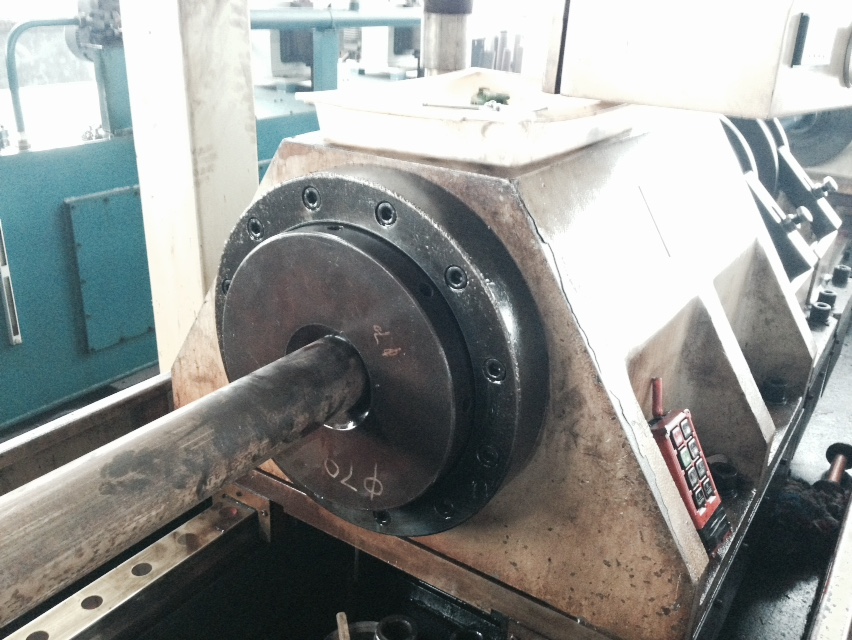
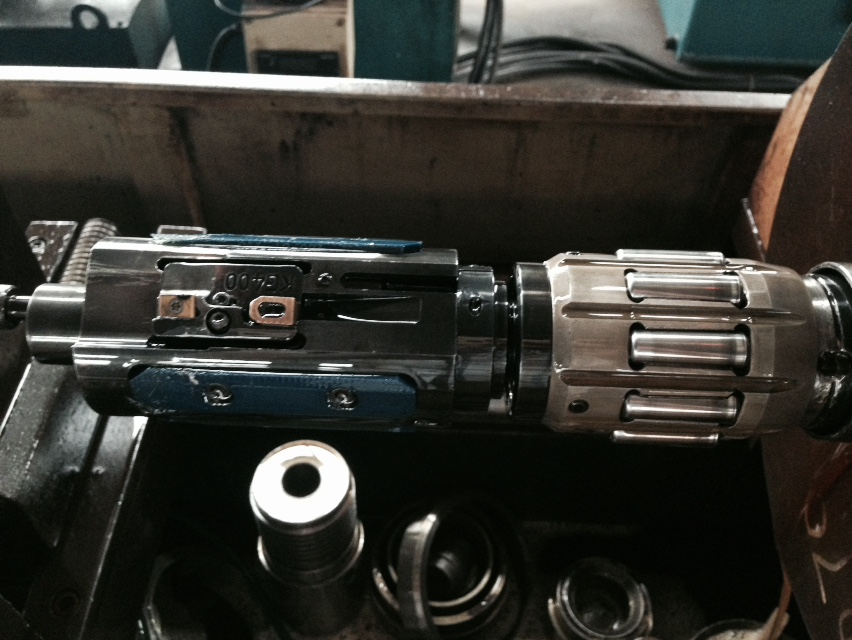
ERW mother tube for Honed Tube
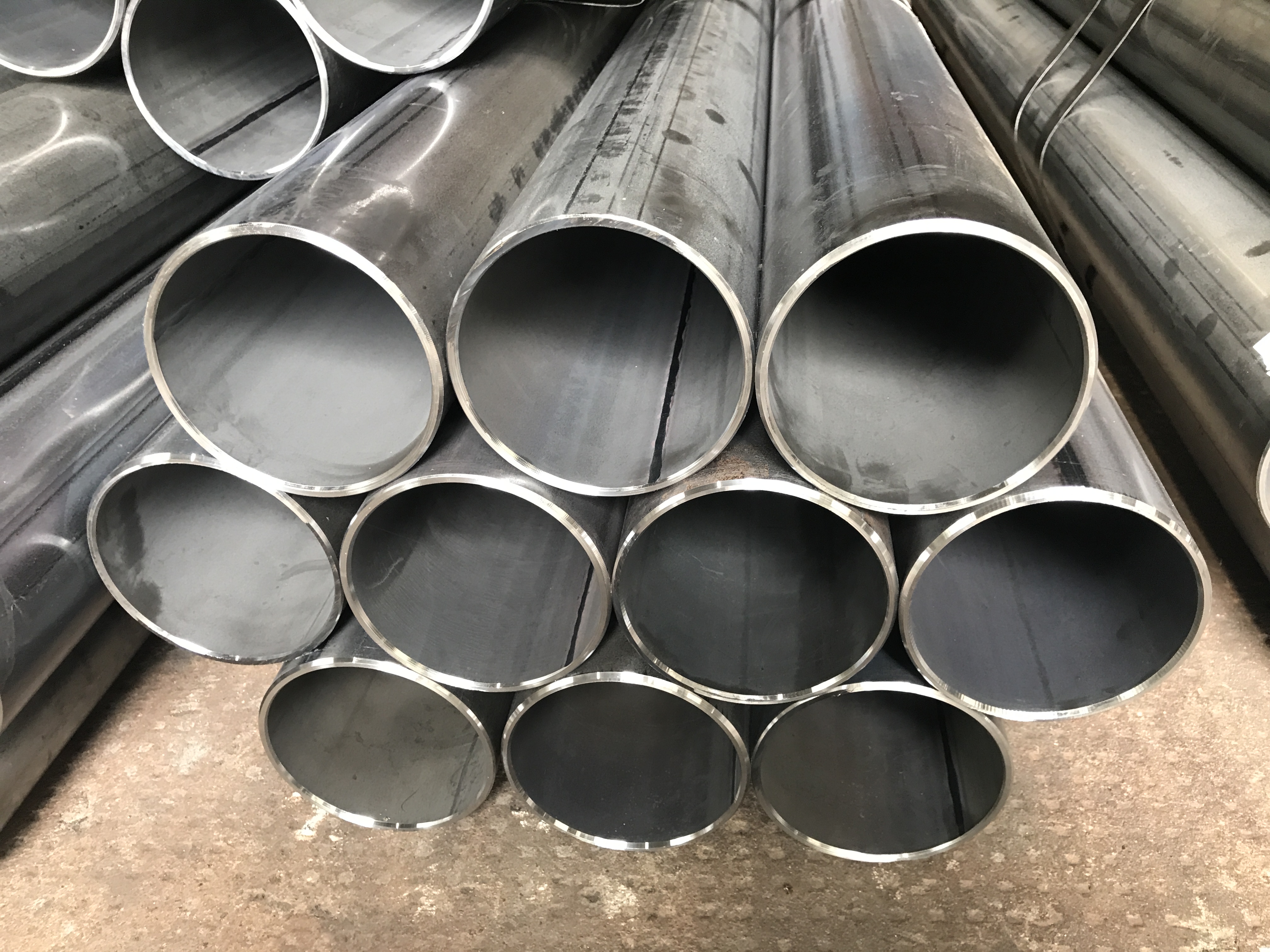
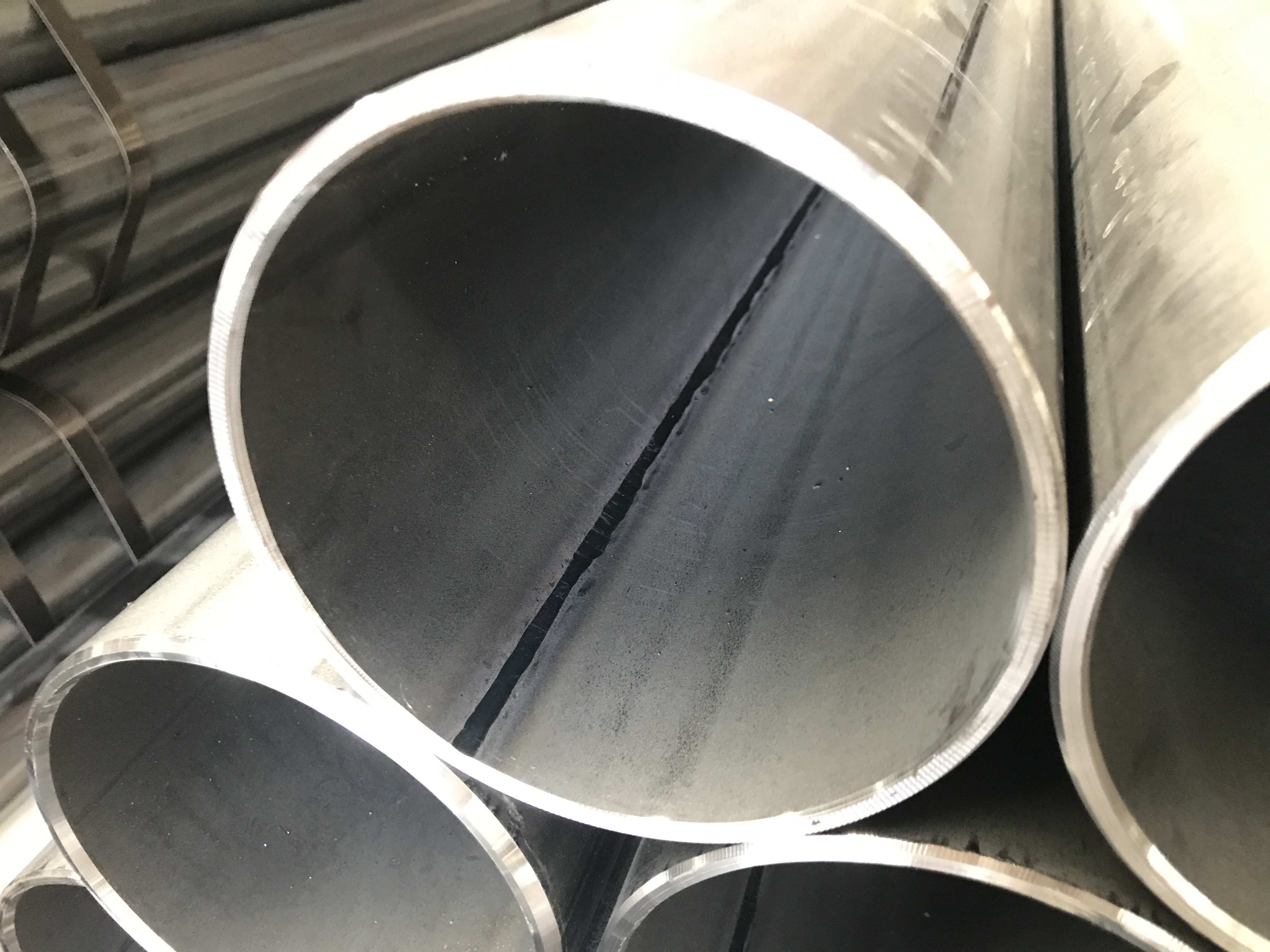
Seamless Steel Tubes in Cold Drawn Production for ID Skiving Roller Burnish Production:
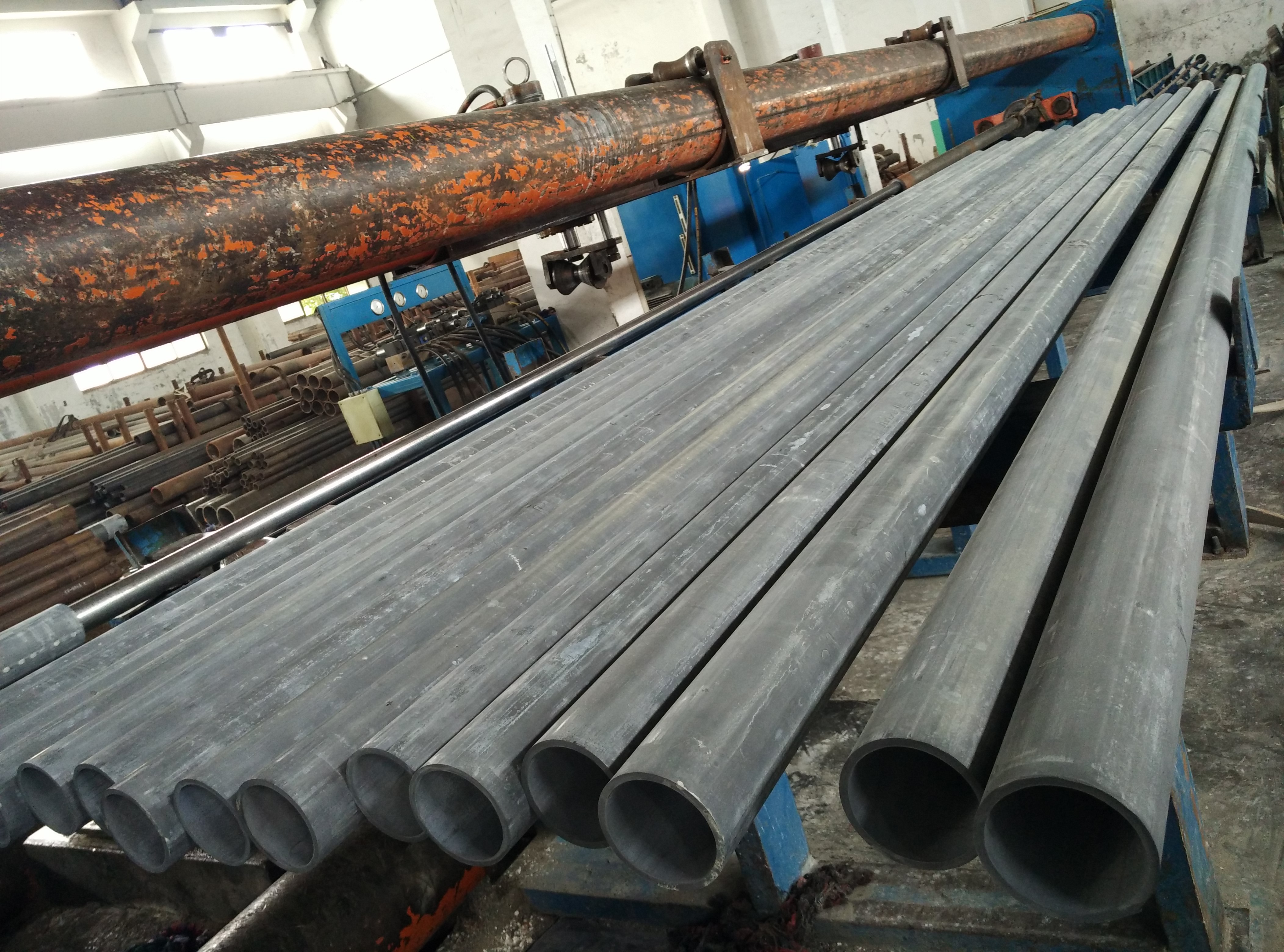
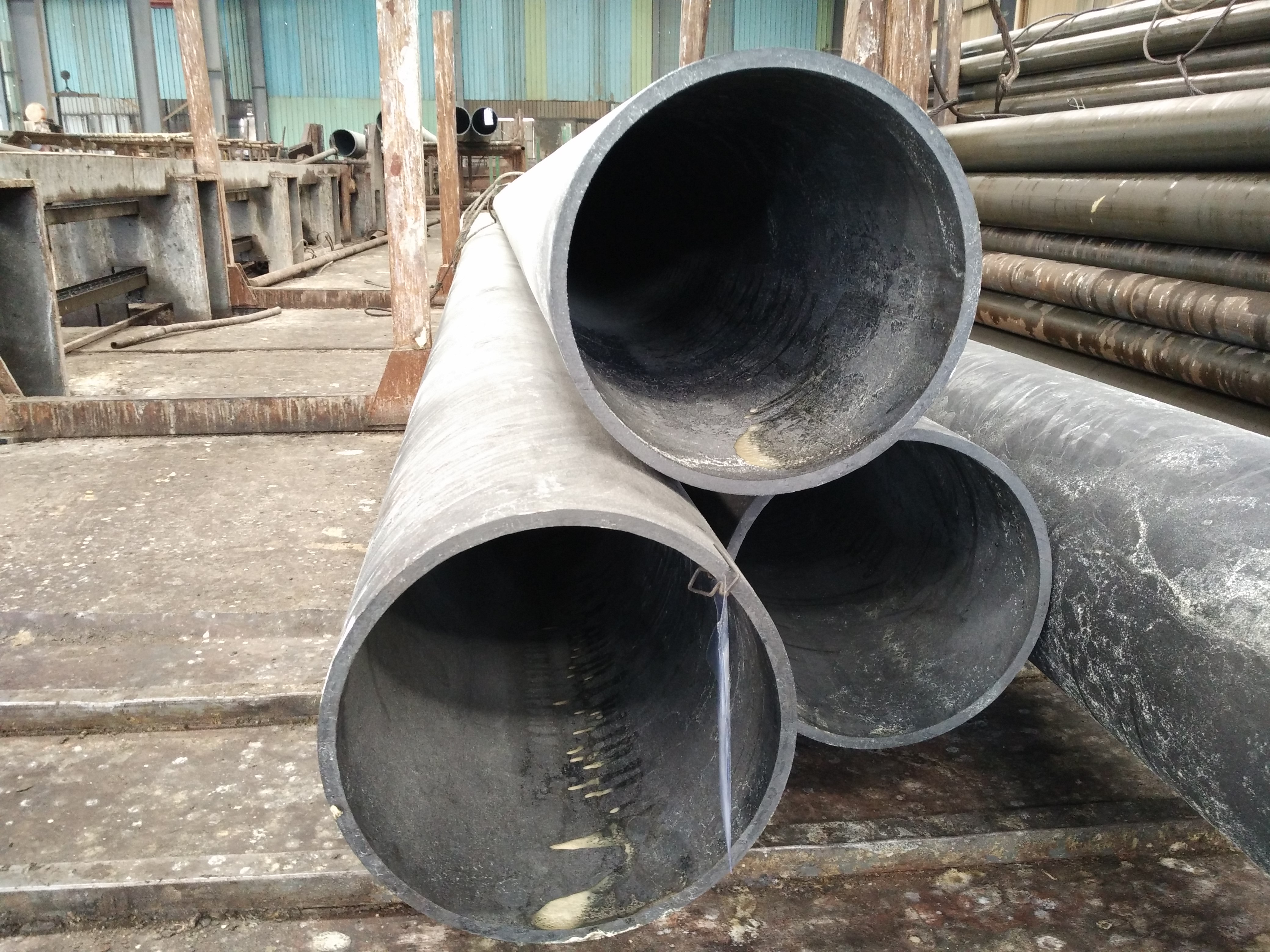
Stainless Steel Pipe ready for ID Honing
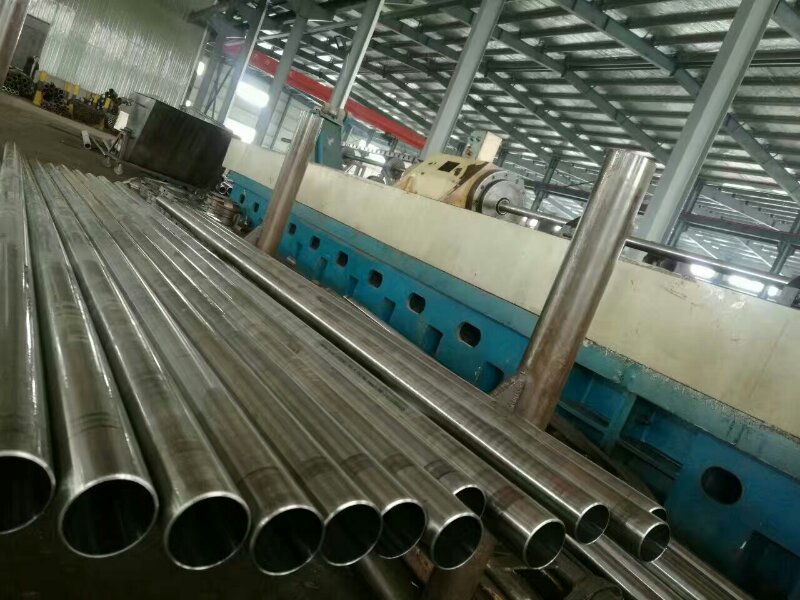

Honed Finish ID for Stainless Steel Pipe:
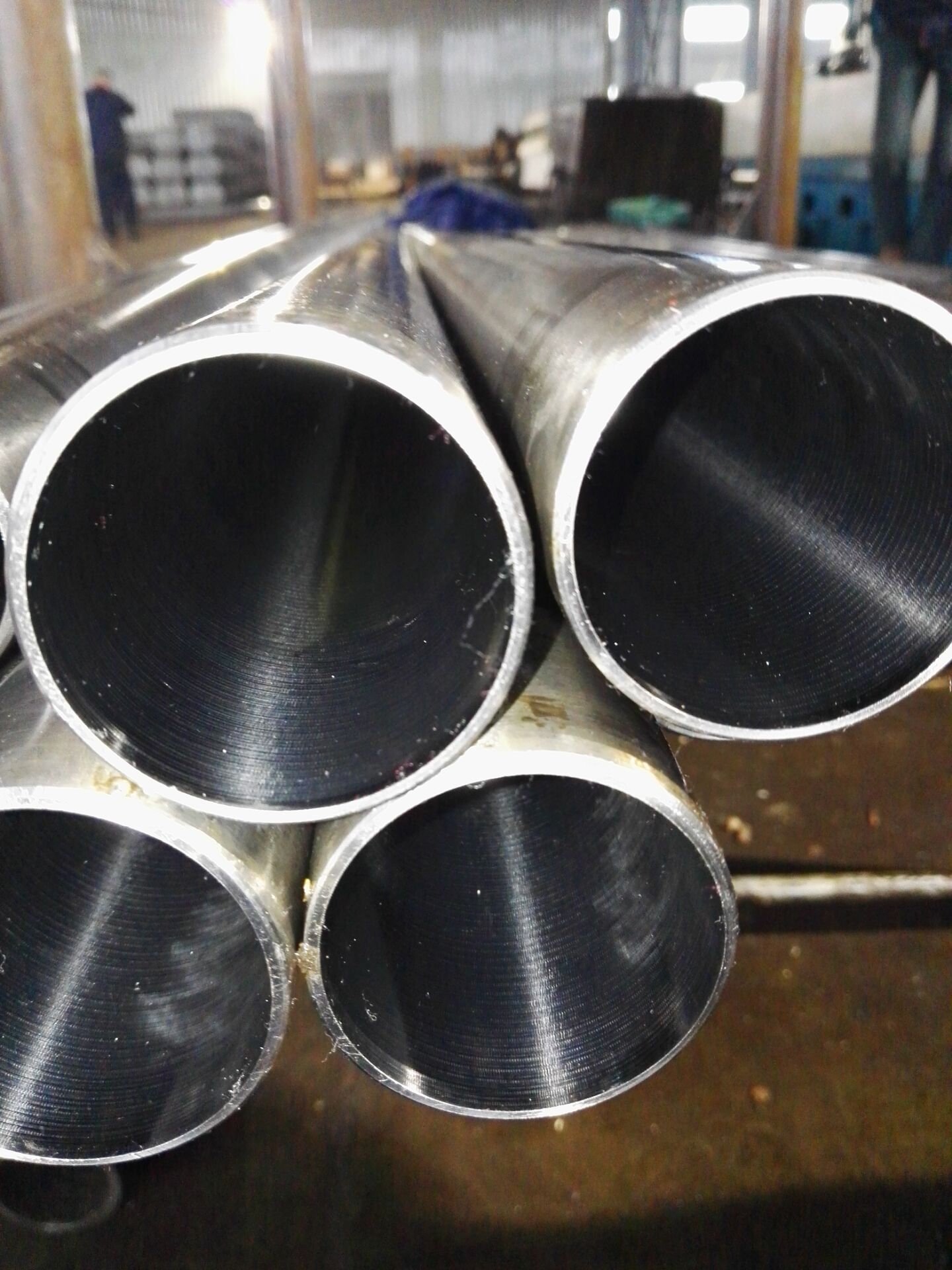
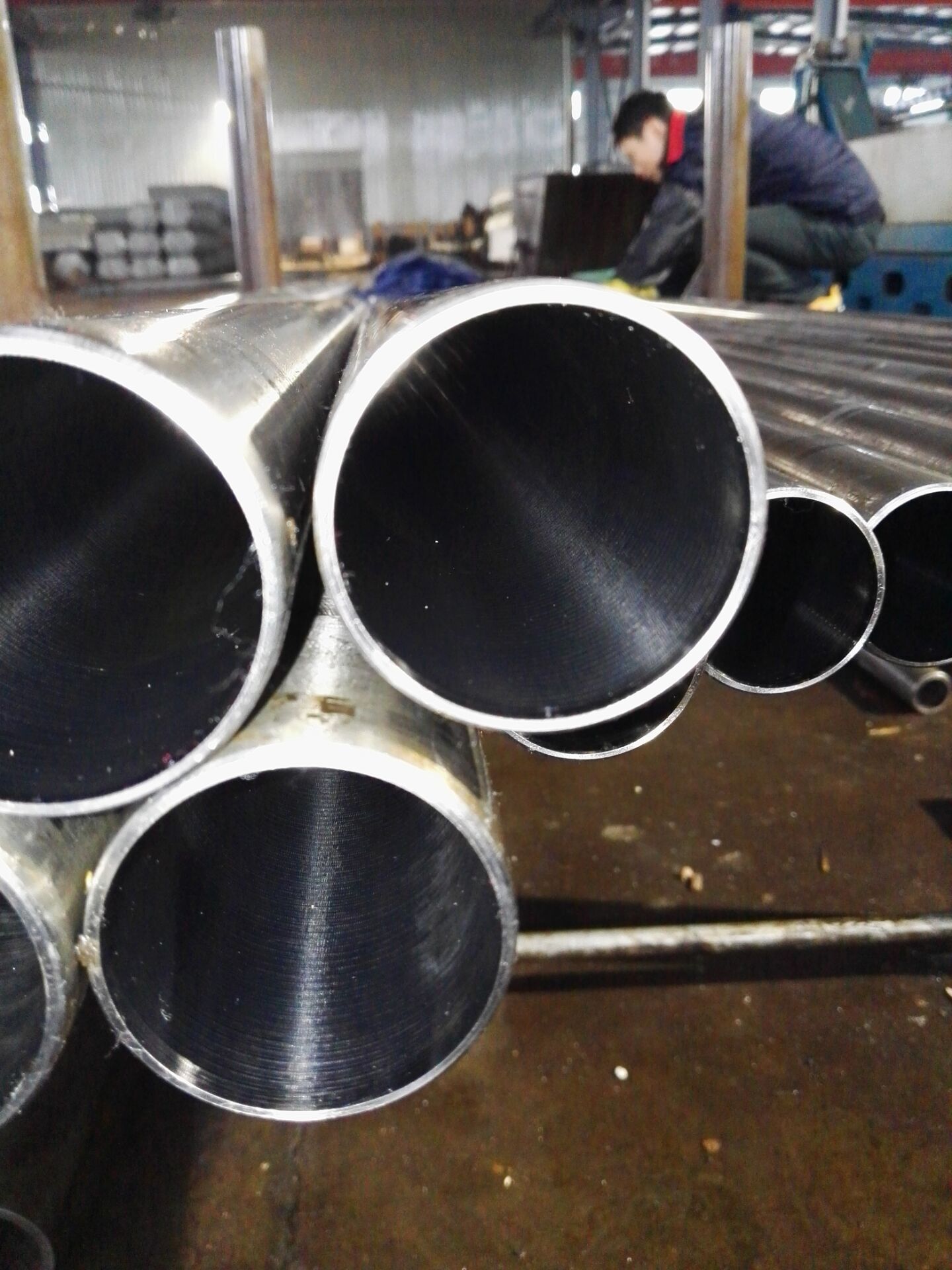
Honed Tube
Honed Tube,High Precision Honed Tube,Honing Hydraulic Cylinder Tube,Carbon Steel Honed Tube
Torich International Limited--The Steel Tube Maker , https://www.chinasteeltubepipe.com